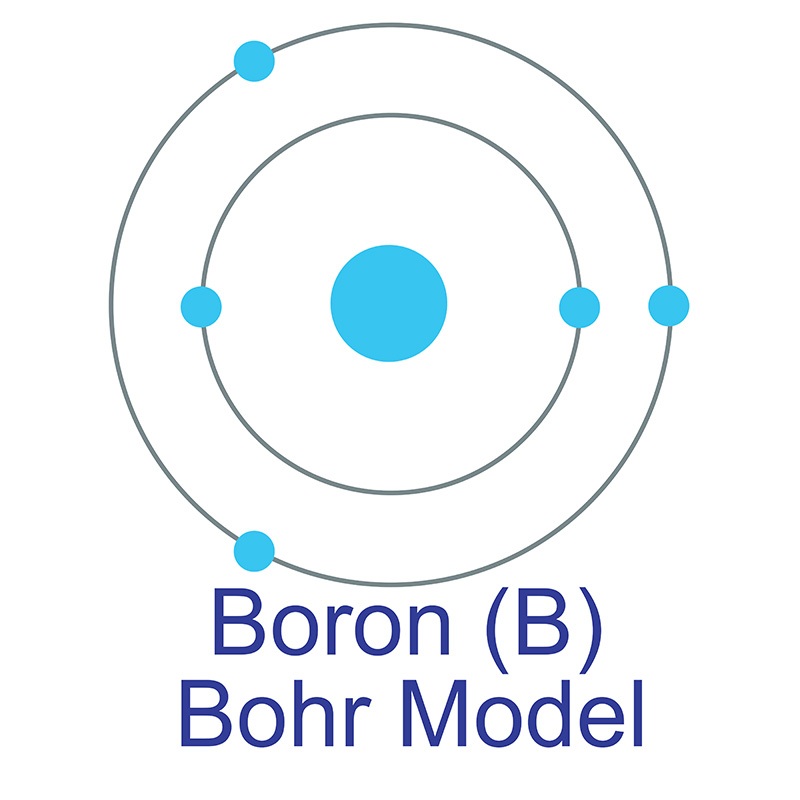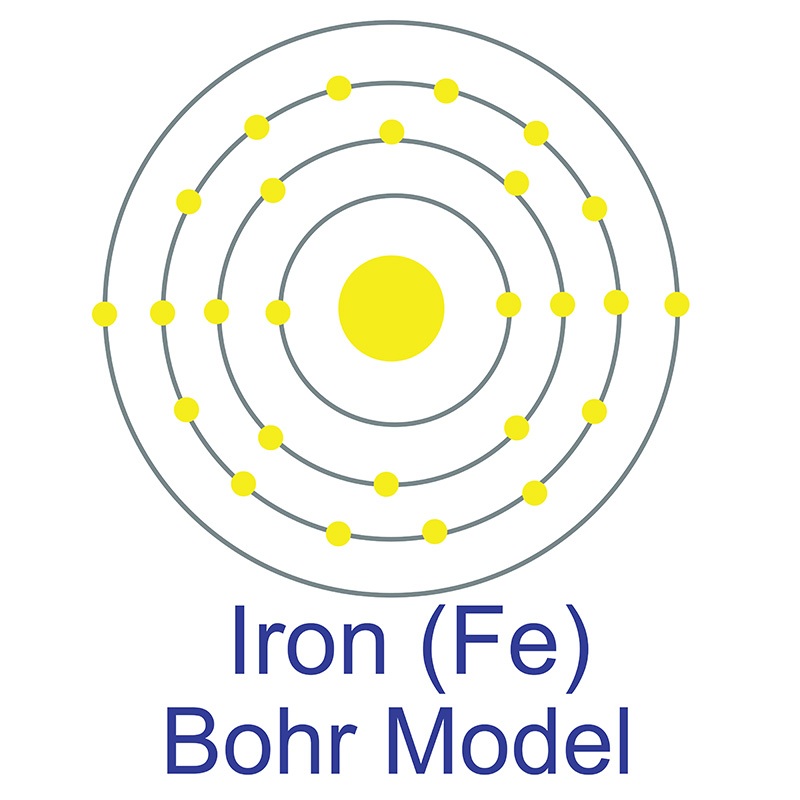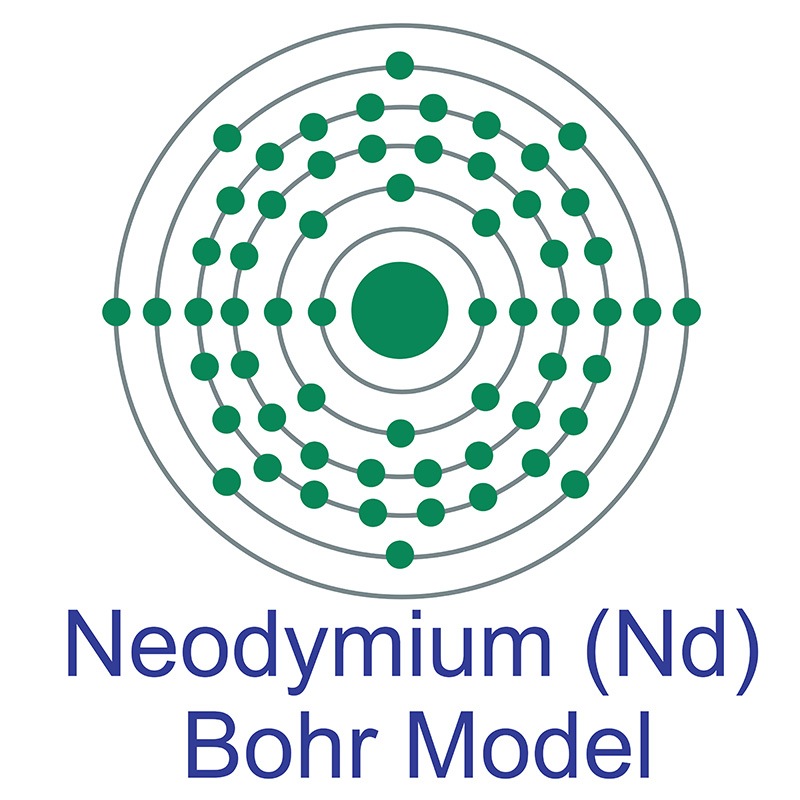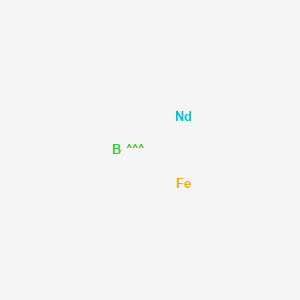SECTION 1. IDENTIFICATION
Product Name: Neodymium-Iron-Boron Alloy
Product Number: All applicable American Elements product codes, e.g. ND-FEB-01
CAS #: 918106-59-9
Relevant identified uses of the substance: Scientific research and development
Supplier details:
American Elements
10884 Weyburn Ave.
Los Angeles, CA 90024
Tel: +1 310-208-0551
Fax: +1 310-208-0351
Emergency telephone number:
Domestic, North America: +1 800-424-9300
International: +1 703-527-3887
SECTION 2. HAZARDS IDENTIFICATION
Classification of the substance or mixture in accordance with 29 CFR 1910 (OSHA HCS)
The product is not classified according to the Globally Harmonized System (GHS).
Hazards not otherwise classified
No information known.
Label elements
GHS label elements
Not applicable
Hazard pictograms
Not applicable
Signal word
Not applicable
Hazard statements
Not applicable
WHMIS classification
Not controlled
Classification system
HMIS ratings (scale 0-4)
(Hazardous Materials Identification System)
Health (acute effects) = 1
Flammability = 0
Physical Hazard = 0
Other hazards
Results of PBT and vPvB assessment
PBT: Not applicable.
vPvB: Not applicable
SECTION 3. COMPOSITION/INFORMATION ON INGREDIENTS
Chemical characterization: Mixtures
Dangerous components:
7440-42-8 Boron
Additional information: None known.
Non-Hazardous Ingredients
7439-89-6 Iron
7440-00-8 Neodymium
SECTION 4. FIRST AID MEASURES
Description of first aid measures
General information
No special measures required.
After inhalation
Seek medical treatment in case of complaints.
After skin contact
Generally the product does not irritate the skin.
After eye contact
Rinse opened eye for several minutes under running water. If symptoms persist, consult a doctor.
After swallowing
If symptoms persist consult doctor.
Information for doctor
Most important symptoms and effects, both acute and delayed
No further relevant information available.
Indication of any immediate medical attention and special treatment needed
No further relevant information available.
SECTION 5. FIREFIGHTING MEASURES
Extinguishing media
Suitable extinguishing agents
Special powder for metal fires. Do not use water.
For safety reasons unsuitable extinguishing agents
Water
Special hazards arising from the substance or mixture
Powder: highly flammable
Powder: contact with water liberates extremely flammable gases.
If this product is involved in a fire, the following can be released:
Boron oxide
Iron oxides
Neodymium oxide
Advice for firefighters
Protective equipment:
No special measures required.
SECTION 6. ACCIDENTAL RELEASE MEASURES
Personal precautions, protective equipment and emergency procedures
Not required.
Environmental precautions:
Do not allow product to reach sewage system or any water course.
Methods and material for containment and cleaning up:
Pick up mechanically.
Prevention of secondary hazards:
No special measures required.
Reference to other sections
See Section 7 for information on safe handling
See Section 8 for information on personal protection equipment.
See Section 13 for disposal information.
SECTION 7. HANDLING AND STORAGE
Handling
Precautions for safe handling
Keep container tightly sealed.
Store in cool, dry place in tightly closed containers.
Information about protection against explosions and fires:
No special measures required.
Conditions for safe storage, including any incompatibilities
Storage
Requirements to be met by storerooms and receptacles:
No special requirements.
Information about storage in one common storage facility:
Do not store together with acids.
Store away from oxidizing agents.
Store away from halogens.
Store away from halocarbons.
Further information about storage conditions:
Keep container tightly sealed.
Store in cool, dry conditions in well sealed containers.
Specific end use(s)
No further relevant information available.
SECTION 8. EXPOSURE CONTROLS/PERSONAL PROTECTION
Additional information about design of technical systems:
No further data; see section 7.
Additional information:
No data
Exposure controls
Personal protective equipment
General protective and hygienic measures
The usual precautionary measures for handling chemicals should be followed.
Maintain an ergonomically appropriate working environment.
Breathing equipment:
Not required.
Protection of hands:
Not required.
Eye protection: Safety glasses
Body protection: Protective work clothing.
SECTION 9. PHYSICAL AND CHEMICAL PROPERTIES
Information on basic physical and chemical properties
General Information
Appearance:
Form: Solid in various forms
Color: Silver grey
Odor: Odorless
Odor threshold: Not determined.
pH-value: Not applicable.
Change in condition
Melting point/Melting range: Not determined
Boiling point/Boiling range: Not determined
Sublimation temperature / start: Not determined
Flammability (solid, gaseous): Not determined.
Ignition temperature: 700 °C (1292 °F)
Decomposition temperature: Not determined
Auto igniting: Product is not selfigniting.
Danger of explosion: Not determined.
Explosion limits:
Lower: Not determined
Upper: Not determined
Vapor pressure: Not applicable.
Density at 20 °C (68 °F): 7.5 g/cm³ (62.588 lbs/gal)
Relative density: Not determined.
Vapor density: Not applicable.
Evaporation rate: Not applicable.
Solubility in / Miscibility with Water: Insoluble
Partition coefficient (n-octanol/water): Not determined.
Viscosity:
dynamic: Not applicable.
kinematic: Not applicable.
Solvent content:
Organic solvents: 0.0 %
Solids content: 100.0 %
Other information
No further relevant information available.
SECTION 10. STABILITY AND REACTIVITY
Reactivity
No information known.
Chemical stability
Stable under recommended storage conditions.
Thermal decomposition / conditions to be avoided:
Decomposition will not occur if used and stored according to specifications.
Possibility of hazardous reactions
Reacts with strong oxidizing agents
Conditions to avoid
No further relevant information available.
Incompatible materials:
Acids
Oxidizing agents
Halogens
Halocarbons
Hazardous decomposition products:
Boron oxide
Iron oxides
Neodymium oxide
SECTION 11. TOXICOLOGICAL INFORMATION
Information on toxicological effects
Acute toxicity:
The Registry of Toxic Effects of Chemical Substances (RTECS) contains acute toxicity data for components in this product.
Skin irritation or corrosion: May cause irritation
Eye irritation or corrosion: May cause irritation
Sensitization: No sensitizing effects known.
Germ cell mutagenicity: No effects known.
Carcinogenicity:
EPA-I: Data are inadequate for an assessment of human carcinogenic potential.
The Registry of Toxic Effects of Chemical Substances (RTECS) contains tumorigenic and/or carcinogenic and/or neoplastic data for components in this product.
Reproductive toxicity:
The Registry of Toxic Effects of Chemical Substances (RTECS) contains reproductive data for components in this product.
Specific target organ system toxicity - repeated exposure: No effects known.
Specific target organ system toxicity - single exposure: No effects known.
Aspiration hazard: No effects known.
Subacute to chronic toxicity:
The Registry of Toxic Effects of Chemical Substances (RTECS) contains multiple dose toxicity data for this substance.
Additional toxicological information:
To the best of our knowledge the acute and chronic toxicity of this substance is not fully known.
The product is not subject to classification according to internally approved calculation methods for preparations.
SECTION 12. ECOLOGICAL INFORMATION
Toxicity
Aquatic toxicity:
No further relevant information available.
Persistence and degradability
No further relevant information available.
Bioaccumulative potential
No further relevant information available.
Mobility in soil
No further relevant information available.
Additional ecological information:
General notes:
Do not allow undiluted product or large quantities to reach ground water, water course or sewage system.
Avoid transfer into the environment.
Results of PBT and vPvB assessment
PBT: Not applicable.
vPvB: Not applicable.
Other adverse effects
No further relevant information available.
SECTION 13. DISPOSAL CONSIDERATIONS
Waste treatment methods
Recommendation
Consult state, local or national regulations to ensure proper disposal.
Uncleaned packagings:
Recommendation:
Disposal must be made according to official regulations.
SECTION 14. TRANSPORT INFORMATION
UN-Number
DOT, ADN, IMDG, IATA
Not applicable
UN proper shipping name
DOT, ADN, IMDG, IATA
Not applicable
Transport hazard class(es)
DOT, ADR, ADN, IMDG, IATA
Class
Not applicable
Packing group
DOT, IMDG, IATA
Not applicable
Environmental hazards:
Marine pollutant (IMDG):
No
Special precautions for user
Not applicable.
Transport in bulk according to Annex II of MARPOL73/78 and the IBC Code
Not applicable.
Transport/Additional information:
DOT
Marine Pollutant (DOT):
No
UN "Model Regulation":
-
SECTION 15. REGULATORY INFORMATION
Safety, health and environmental regulations/legislation specific for the substance or mixture
GHS label elements: Not applicable
Hazard pictograms: Not applicable
Signal word: Not applicable
Hazard statements: Not applicable
National regulations
All components of this product are listed in the U.S. Environmental Protection Agency Toxic Substances Control Act Chemical substance Inventory.
All components of this product are listed on the Canadian Domestic Substances List (DSL).
SARA Section 313 (specific toxic chemical listings)
None of the ingredients are listed.
California Proposition 65
Prop 65 - Chemicals known to cause cancer
None of the ingredients are listed.
Prop 65 - Developmental toxicity
None of the ingredients are listed.
Prop 65 - Developmental toxicity, female
None of the ingredients are listed.
Prop 65 - Developmental toxicity, male
None of the ingredients are listed.
Information about limitation of use:
For use only by technically qualified individuals.
Other regulations, limitations and prohibitive regulations
Substance of Very High Concern (SVHC) according to the REACH Regulations (EC) No. 1907/2006.
None of the ingredients are listed.
The conditions of restrictions according to Article 67 and Annex XVII of the Regulation (EC) No 1907/2006 (REACH) for the manufacturing, placing on the market and use must be observed.
None of the ingredients is listed.
Annex XIV of the REACH Regulations (requiring Authorisation for use)
None of the ingredients is listed.
Chemical safety assessment:
A Chemical Safety Assessment has not been carried out.
SECTION 16. OTHER INFORMATION
Safety Data Sheet according to Regulation (EC) No. 1907/2006 (REACH). The above information is believed to be correct but does not purport to be all inclusive and shall be used only as a guide. The information in this document is based on the present state of our knowledge and is applicable to the product with regard to appropriate safety precautions. It does not represent any guarantee of the properties of the product. American Elements shall not be held liable for any damage resulting from handling or from contact with the above product. See reverse side of invoice or packing slip for additional terms and conditions of sale. COPYRIGHT 1997-2022 AMERICAN ELEMENTS. LICENSED GRANTED TO MAKE UNLIMITED PAPER COPIES FOR INTERNAL USE ONLY.
 Boron (atomic symbol: B, atomic number: 5) is a Block P, Group 13, Period 2 element with an atomic weight of 10.81. The number of electrons in each of boron's shells is 2, 3 and its electron configuration is [He] 2s2 2p1. The boron atom has a radius of 90 pm and a Van der Waals radius of 192 pm. Boron was discovered by Joseph Louis Gay-Lussac and Louis Jacques Thénard in 1808 and was first isolated by Humphry Davy later that year. Boron is classified as a metalloid is not found naturally on earth.
Boron (atomic symbol: B, atomic number: 5) is a Block P, Group 13, Period 2 element with an atomic weight of 10.81. The number of electrons in each of boron's shells is 2, 3 and its electron configuration is [He] 2s2 2p1. The boron atom has a radius of 90 pm and a Van der Waals radius of 192 pm. Boron was discovered by Joseph Louis Gay-Lussac and Louis Jacques Thénard in 1808 and was first isolated by Humphry Davy later that year. Boron is classified as a metalloid is not found naturally on earth.  Along with carbon and nitrogen, boron is one of the few elements in the periodic table known to form stable compounds featuring triple bonds. Boron has an energy band gap of 1.50 to 1.56 eV, which is higher than that of either silicon or germanium. The name Boron originates from a combination of carbon and the Arabic word buraqu meaning borax.
Along with carbon and nitrogen, boron is one of the few elements in the periodic table known to form stable compounds featuring triple bonds. Boron has an energy band gap of 1.50 to 1.56 eV, which is higher than that of either silicon or germanium. The name Boron originates from a combination of carbon and the Arabic word buraqu meaning borax. The iron atom has a radius of 126 pm and a Van der Waals radius of 194 pm. Iron was discovered by humans before 5000 BC. In its elemental form, iron has a lustrous grayish metallic appearance. Iron is the fourth most common element in the Earth's crust and the most common element by mass forming the earth as a whole. Iron is rarely found as a free element, since it tends to oxidize easily; it is usually found in minerals such as magnetite, hematite, goethite, limonite, or siderite.
The iron atom has a radius of 126 pm and a Van der Waals radius of 194 pm. Iron was discovered by humans before 5000 BC. In its elemental form, iron has a lustrous grayish metallic appearance. Iron is the fourth most common element in the Earth's crust and the most common element by mass forming the earth as a whole. Iron is rarely found as a free element, since it tends to oxidize easily; it is usually found in minerals such as magnetite, hematite, goethite, limonite, or siderite. Though pure iron is typically soft, the addition of carbon creates the
Though pure iron is typically soft, the addition of carbon creates the  The number of electrons in each of Neodymium's shells is 2, 8, 18, 22, 8, 2 and its electron configuration is [Xe] 4f4 6s2. The neodymium atom has a radius of 181 pm and a Van der Waals radius of 229 pm. Neodymium was first discovered by Carl Aer von Welsbach in 1885. In its elemental form, neodymium has a silvery-white appearance. Neodymium is the most abundant of the rare earths after cerium and lanthanum.
The number of electrons in each of Neodymium's shells is 2, 8, 18, 22, 8, 2 and its electron configuration is [Xe] 4f4 6s2. The neodymium atom has a radius of 181 pm and a Van der Waals radius of 229 pm. Neodymium was first discovered by Carl Aer von Welsbach in 1885. In its elemental form, neodymium has a silvery-white appearance. Neodymium is the most abundant of the rare earths after cerium and lanthanum.  Neodymium is found in monazite and bastnäsite ores. It is used to make high-strength neodymium magnets and
Neodymium is found in monazite and bastnäsite ores. It is used to make high-strength neodymium magnets and 
